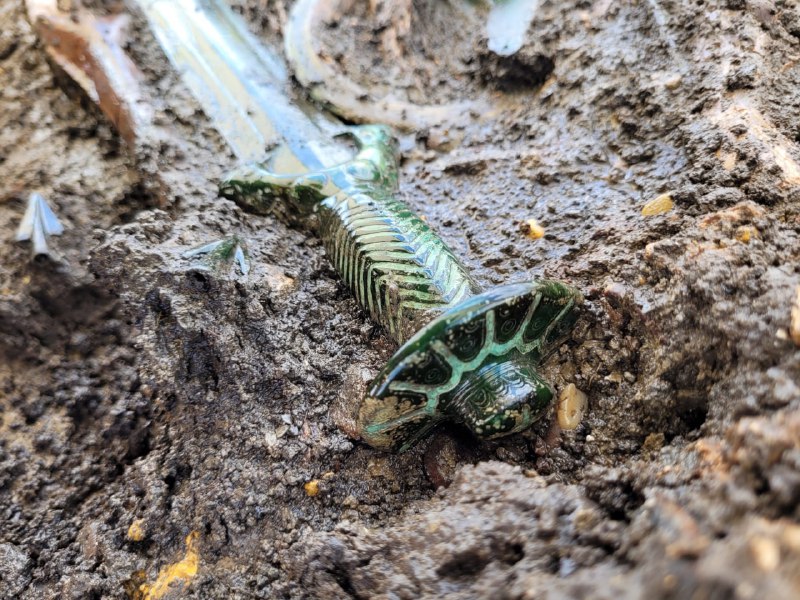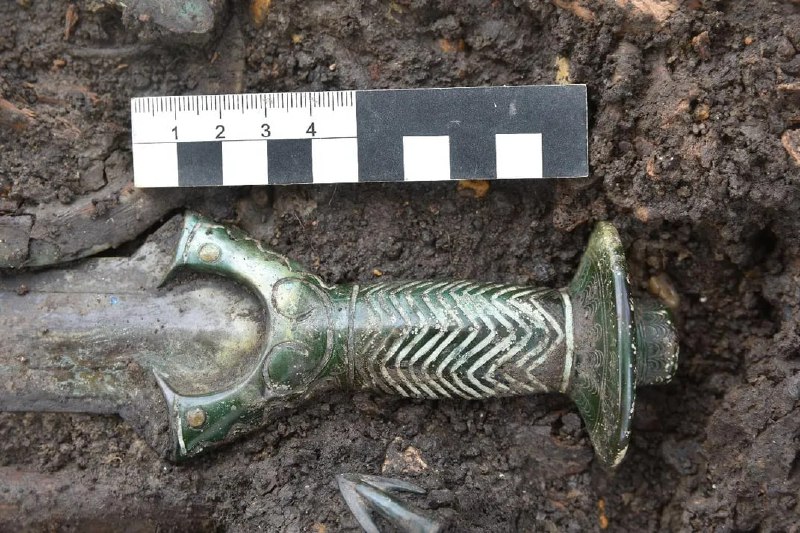Extraordinarily Well-Preserved 3,000-Year-Old Octagonal Sword Unearthed in Närdlingen, Germany.
Found at the site of a former Celtic settlement, the sword was buried with other bronze objects in a grave alongside three people (a man, a woman, and a boy). Although this grouping is suggestive of a family unit, archeologists were keen to stress it remains unclear how, if at all, the three were related.
Although the sword bears little sign of having being used in combat, archeologists say they believe it was a real rather than an ornamental weapon. “The center of gravity in the front part of the blade indicates that it was balanced mainly for slashing,” according to the statement.
Found at the site of a former Celtic settlement, the sword was buried with other bronze objects in a grave alongside three people (a man, a woman, and a boy). Although this grouping is suggestive of a family unit, archeologists were keen to stress it remains unclear how, if at all, the three were related.
Although the sword bears little sign of having being used in combat, archeologists say they believe it was a real rather than an ornamental weapon. “The center of gravity in the front part of the blade indicates that it was balanced mainly for slashing,” according to the statement.
group-telegram.com/TraditionalEurope/4396
Create:
Last Update:
Last Update:
Extraordinarily Well-Preserved 3,000-Year-Old Octagonal Sword Unearthed in Närdlingen, Germany.
Found at the site of a former Celtic settlement, the sword was buried with other bronze objects in a grave alongside three people (a man, a woman, and a boy). Although this grouping is suggestive of a family unit, archeologists were keen to stress it remains unclear how, if at all, the three were related.
Although the sword bears little sign of having being used in combat, archeologists say they believe it was a real rather than an ornamental weapon. “The center of gravity in the front part of the blade indicates that it was balanced mainly for slashing,” according to the statement.
Found at the site of a former Celtic settlement, the sword was buried with other bronze objects in a grave alongside three people (a man, a woman, and a boy). Although this grouping is suggestive of a family unit, archeologists were keen to stress it remains unclear how, if at all, the three were related.
Although the sword bears little sign of having being used in combat, archeologists say they believe it was a real rather than an ornamental weapon. “The center of gravity in the front part of the blade indicates that it was balanced mainly for slashing,” according to the statement.
BY Traditional Europe



Share with your friend now:
group-telegram.com/TraditionalEurope/4396
